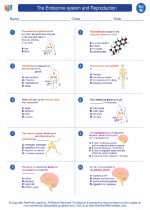Pancreas
The pancreas is a vital organ located in the abdomen, behind the stomach. It has both endocrine and exocrine functions, making it a crucial part of the digestive and endocrine systems.
Anatomy of the Pancreas
The pancreas is a long, flattened gland that is about 6 inches long and is situated horizontally across the abdomen. It is divided into three main regions: the head, the body, and the tail. The head of the pancreas is connected to the duodenum (the first part of the small intestine), while the tail extends towards the spleen.
Endocrine Functions
The endocrine function of the pancreas involves the production and secretion of hormones, the most important of which are insulin and glucagon. These hormones are released into the bloodstream and help regulate blood sugar levels. Insulin lowers blood sugar levels, while glucagon raises them.
Exocrine Functions
The exocrine function of the pancreas involves the production and secretion of digestive enzymes. These enzymes, including amylase, lipase, and proteases, are released into the small intestine to aid in the digestion of carbohydrates, fats, and proteins, respectively.
Health Issues Related to the Pancreas
Issues with the pancreas can lead to serious health conditions, such as diabetes mellitus (due to insulin dysfunction) and pancreatic cancer. Pancreatitis, inflammation of the pancreas, can also occur due to various factors including alcohol consumption, gallstones, and certain medications.
Study Guide
.◂Science Worksheets and Study Guides Eighth Grade. The Endocrine system and Reproduction

 Worksheet/Answer key
Worksheet/Answer key
 Worksheet/Answer key
Worksheet/Answer key
 Worksheet/Answer key
Worksheet/Answer key
 Vocabulary/Answer key
Vocabulary/Answer key
 Vocabulary/Answer key
Vocabulary/Answer key
 Vocabulary/Answer key
Vocabulary/Answer key
 Vocabulary/Answer key
Vocabulary/Answer key
 Vocabulary/Answer key
Vocabulary/Answer key
